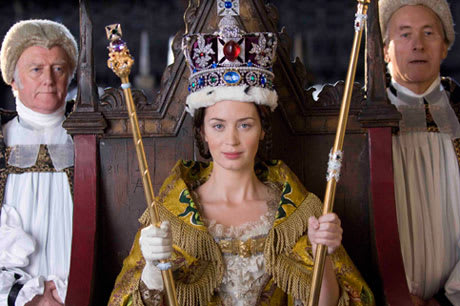Even though The Young Victoria is a bit of a failure, gliding by on superficiality and reducing historical figures to single-minded villains for narrative simplicity, it is a gorgeous failure, with a subtly fragile, but a strong, human performance from Emily Blunt as the titular Victoria. And while it won an Oscar for costume design, granting Sandy Powell an opportunity to tell the Oscar folks that not only period pieces deserve recognition for costuming, Emily Blunt wasn't nominated for acting. Instead, the politically conscious folks of the academy gave a genuinely patronizing nomination to Gabourey Sidibe for Precious, further solidifying how much of a joke those awards really are. Regardless, the words "Academy Award Winner" stands out on the DVD cover of The Young Victoria, and the DVD supplements discuss, for the most part, the visual elements recognized by that group, with supplements about the costumes, the wedding and the coronation. There is also a brief "Making Of" pointing out that the intention of the film was to explore the human side of the intangible monarchy. The first half of the film details Victoria's life leading up to taking the throne, with the Duchess of Kent (Miranda Richardson), her mother, and Sir John Conroy (Mark Strong) trying their damnedest to get her to sign a regency order that would give them her impending power. Of course, we all know she became Queen ― the longest reigning Queen, in fact ― so the latter part of this story elaborates on her growing pains in the new role while developing a budding romance with her cousin Albert (Rupert Friend). Since director Jean-Marc Vallee is more interested in establishing a beautiful shot than finding the emotional centre of a given scene, the intended "behind the curtains" look at Victoria's life comes off as distant and hollow, which is only exacerbated by limiting secondary characters to dog-kicking demons or altruistic, supporting ciphers. That said, there is a sense of humour and levity amongst the clunky metaphors and bloated exposition, which is rare for a period piece.
(Alliance)The Young Victoria
Jean-Marc Vallée

BY Robert BellPublished Apr 22, 2010